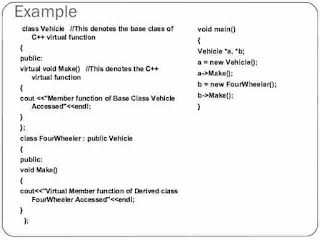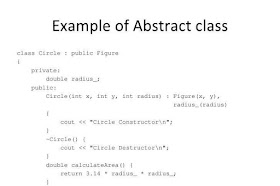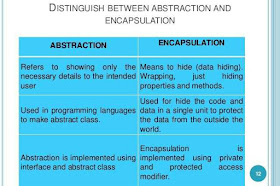Constructor and De-constructor
Programming in C Plus PlusConstructor and De-constructor-
Constructor-
Constructor एक प्रकार के special member function है जो कि class के object को initalize करने के काम आता है यह special इसलिए है क्योंकि इसका name वही होता है जो कि class का name होगा।
(1) Constructor को public part में declare किया जाता है।
(2) इनका कोई return type नही होता है।
(3) इनको inherit नही किया जा सकता है।
Types of Constructor-
Constructor दो प्रकार के होते है।
(I) Default constructor
(II) Parameterized constructor
(I) Default constructor- इनका उपयोग object के सापेक्ष scope resolution operator (::) के द्वारा किया जाता है।
यह constructor अपने पास कोई argument नही रखते हैं।
Example-
Class fruit
{
int x,y;
Public:
fruit();
-------------
-------------
};
fruit :: fruit()
{
x=5;
y=3;
----------
----------
}
(II) Parametrized constructor- इसमें constructor argument ले सकता है। Argument को value प्रदान करने के लिए constructor को call किया जाता है।
Example-
Class fruit
{
int x,y;
Public:
fruit(int a, int b);
-------------
-------------
};
fruit :: fruit(int a, int b)
{
x=a;
y=b;
----------
----------
}
De-Constructor-
Constructor द्वारा बनाये गये objects को destroy करने के लिए
De-constructor का use होता है।
De-Constructor भी एक member function है, जिसका name class name ही होता है तथा constructor कभी भी किसी भी प्रकार का argument नही लेता है न ही कोई value return करता है।
◆De-Constructor के name के आगे tilde(~) का प्रयोग किया जाता है।
Example-
Class fruit
{
int x, y;
Public:
fruit()
~ fruit();
Cout<<"destroyed";
}
fruit :: fruit(int a, int b)
{
x=a;
y=b;
-------------
-------------
}




























